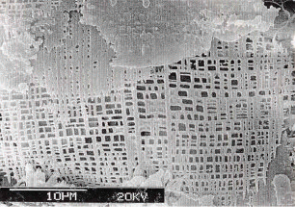Geochemical Influences on Life’s Origins and Evolution
The early Earth was hot and chaotic, bombarded intensely from 4.5 to 3.8 billion years ago. In ponds near the flanks of volcanoes, feldspars and zeolites from volcanic flows and ash were alternately washed by fluids and dried, fostering adsorption and catalytic processes. Some silica-rich surfaces favored adsorption of organic molecules, including amino acids, which were produced by lightning in volcanic clouds. Catalysis then promot- ed polymerization to generate more complex molecules. Dissolution of alkali feldspars created a honeycomb of cavities, which may have acted as tempo- rary cell walls, while phosphorus released from the weathering feldspar framework was available for energy molecules. Following the emergence of the first cells, geochemical processes continued to influence biological evolution. Alkali-rich volcanoes introduced metallic elements, which served as nutrients in the food supply and may also have accelerated the rate of primate evolution prior to the appearance of hominids.
Geochemical Influences on Life’s Origins and Evolution Read More »


